
WSl57 + 5V 1.6A precision switching power supply circuit comprising
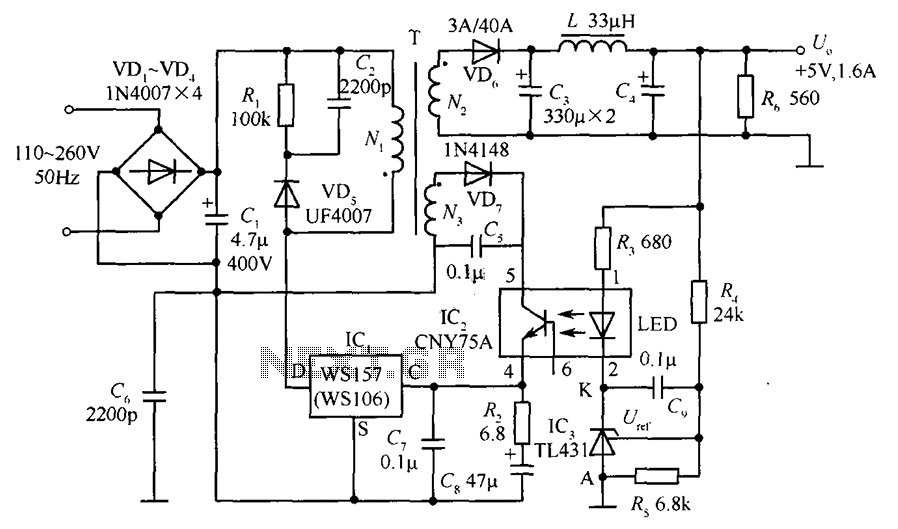
The circuit incorporates an optical coupler (CNY75A) and an adjustable precision shunt regulator (TL431). It includes current limiting resistors R3, R4, and R5 for the sampling resistor. As the output voltage (Uo) varies, the voltage across the sampling resistor and the internal 2.5V reference voltage of the TL431 affects the potential on the K side. This change modifies the operating current and luminous intensity of the LED in the CNY75A optocoupler, which in turn adjusts the control current on the WS157 side. The duty cycle can be finely tuned to achieve precise regulation. The CNY75A also provides electrical isolation. The switch SV has a power tolerance of 0.1%, while SI has a tolerance of 0.78%.
The circuit functions by integrating an optical coupler, specifically the CNY75A, which facilitates isolation between the input and output stages while allowing signal transfer. The TL431 serves as a precision shunt regulator, maintaining a stable reference voltage of 2.5V. The resistors R3, R4, and R5 are employed to limit current through the sampling resistor, ensuring that the circuit operates within safe parameters.
As the output voltage (Uo) fluctuates, it impacts the voltage across the sampling resistor, which is monitored against the TL431’s internal reference. This feedback mechanism is crucial for maintaining the desired output characteristics. The changes in voltage affect the K side potential, leading to variations in the LED operating current within the CNY75A. Consequently, this modulation alters the luminous intensity of the LED, which acts as an input signal for the optocoupler.
The optocoupler's output is then used to adjust the control current flowing to the WS157, allowing for precise manipulation of the duty cycle. Such fine-tuning is essential for achieving the desired regulation in applications where stability and accuracy are paramount. The inclusion of the CNY75A not only allows for effective signal transfer but also ensures electrical isolation, which is critical in protecting sensitive components from potential voltage spikes or noise.
The switches SV and SI are configured to provide specific tolerance levels, ensuring that the circuit operates reliably under varying conditions. The power tolerance of 0.1% for switch SV and 0.78% for switch SI reflects the precision required in this circuit design, highlighting the importance of maintaining accuracy in the control and regulation processes. Overall, this circuit design exemplifies the integration of optical coupling and precision regulation to achieve effective and reliable performance in electronic applications. As shown, the circuit adds an optical coupler (CNY75A) and adjustable precision shunt regulator (TL431). Current limiting resistor R3, R4 and R5 for the sampling resistor. When Uo changes, the voltage on the sampling and TL431 internal 2.5V reference voltage, K side potential changes, changes CNY75A the launch tube (LED) operating current and luminous intensity, and then through the optocoupler to adjust the control WSl57 side current, duty cycle can be finely adjusted to achieve precise purpose of regulation. CNY75A electrical isolation also play a role. Found this switch Sv 0.1% power, SI 0.78%.
The circuit functions by integrating an optical coupler, specifically the CNY75A, which facilitates isolation between the input and output stages while allowing signal transfer. The TL431 serves as a precision shunt regulator, maintaining a stable reference voltage of 2.5V. The resistors R3, R4, and R5 are employed to limit current through the sampling resistor, ensuring that the circuit operates within safe parameters.
As the output voltage (Uo) fluctuates, it impacts the voltage across the sampling resistor, which is monitored against the TL431’s internal reference. This feedback mechanism is crucial for maintaining the desired output characteristics. The changes in voltage affect the K side potential, leading to variations in the LED operating current within the CNY75A. Consequently, this modulation alters the luminous intensity of the LED, which acts as an input signal for the optocoupler.
The optocoupler's output is then used to adjust the control current flowing to the WS157, allowing for precise manipulation of the duty cycle. Such fine-tuning is essential for achieving the desired regulation in applications where stability and accuracy are paramount. The inclusion of the CNY75A not only allows for effective signal transfer but also ensures electrical isolation, which is critical in protecting sensitive components from potential voltage spikes or noise.
The switches SV and SI are configured to provide specific tolerance levels, ensuring that the circuit operates reliably under varying conditions. The power tolerance of 0.1% for switch SV and 0.78% for switch SI reflects the precision required in this circuit design, highlighting the importance of maintaining accuracy in the control and regulation processes. Overall, this circuit design exemplifies the integration of optical coupling and precision regulation to achieve effective and reliable performance in electronic applications. As shown, the circuit adds an optical coupler (CNY75A) and adjustable precision shunt regulator (TL431). Current limiting resistor R3, R4 and R5 for the sampling resistor. When Uo changes, the voltage on the sampling and TL431 internal 2.5V reference voltage, K side potential changes, changes CNY75A the launch tube (LED) operating current and luminous intensity, and then through the optocoupler to adjust the control WSl57 side current, duty cycle can be finely adjusted to achieve precise purpose of regulation. CNY75A electrical isolation also play a role. Found this switch Sv 0.1% power, SI 0.78%.
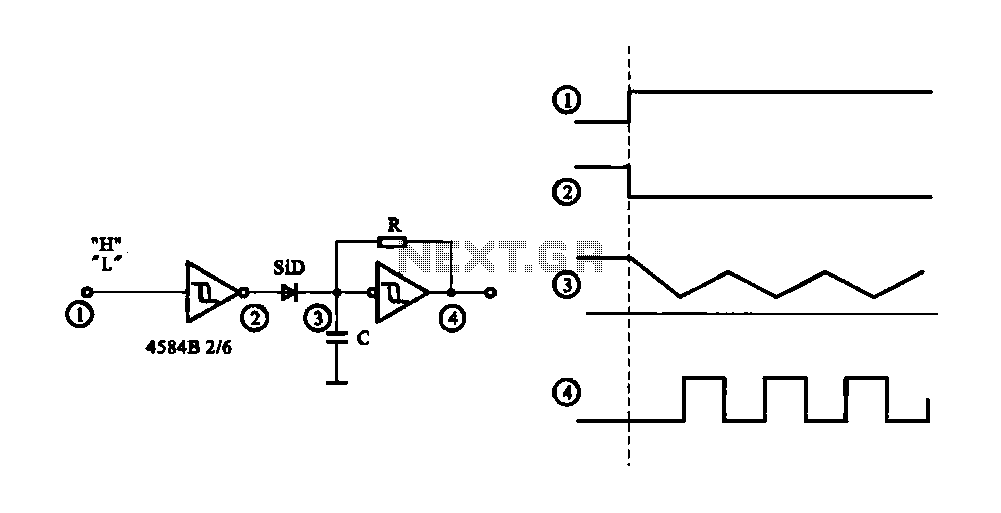
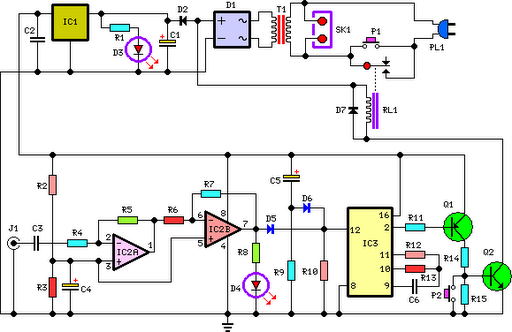
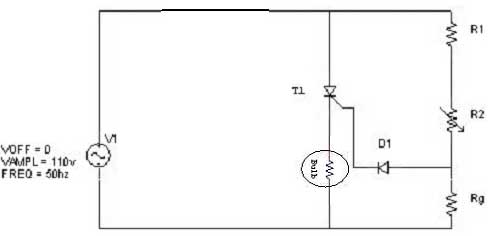
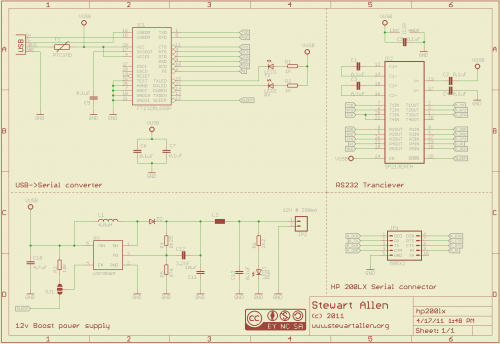
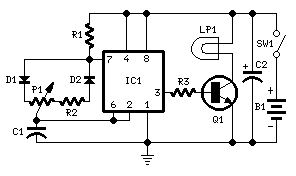
.png)